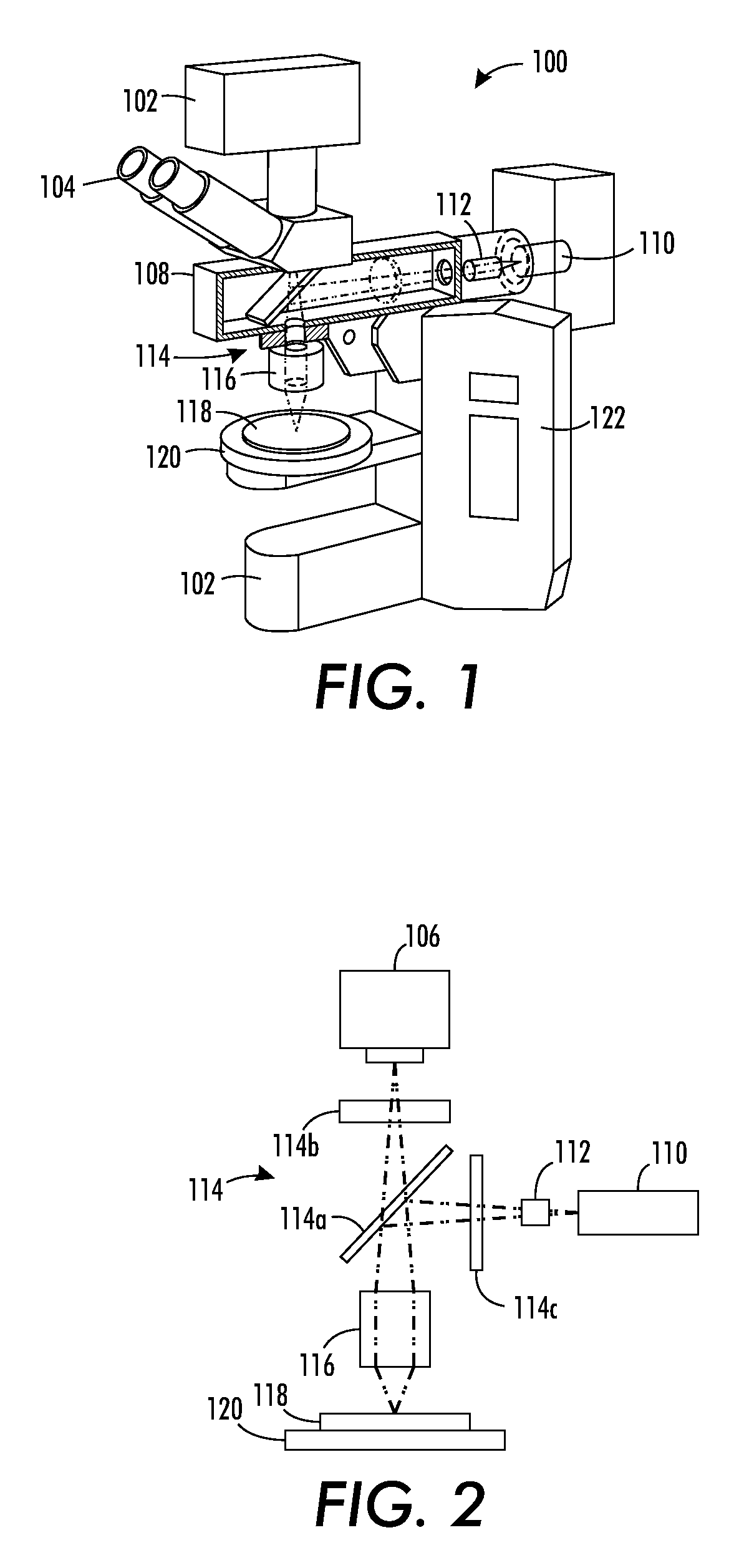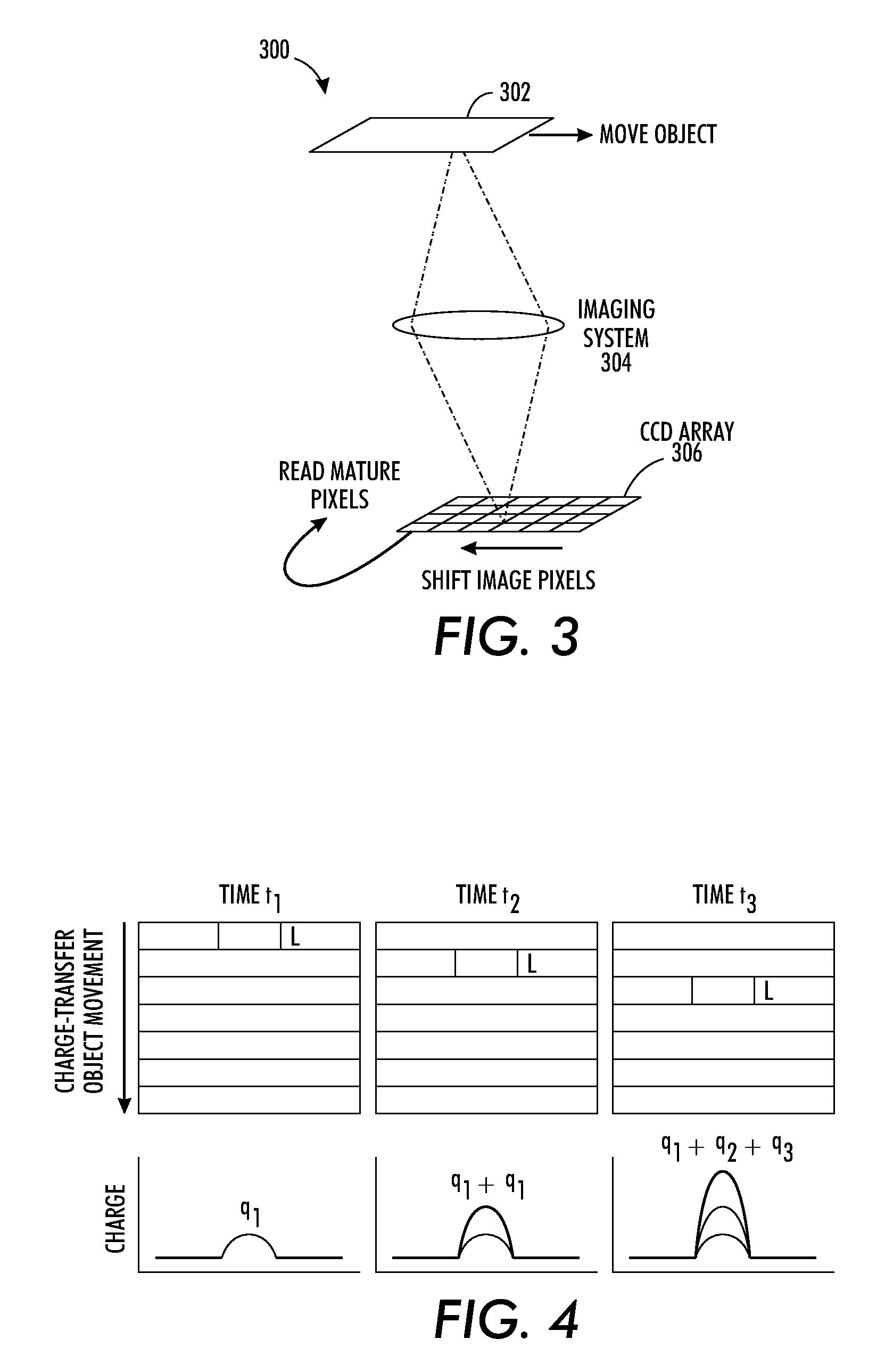Drift scanner for rare cell detection
a scanner and rare cell technology, applied in the field of imaging arts, can solve the problems of difficult to identify each cell individually, difficult to detect affected cells with existing technology, and low concentration of rare cells in blood or other bodily fluids, etc., and achieve the effect of low resolution, high speed and acquired imag
- Summary
- Abstract
- Description
- Claims
- Application Information
AI Technical Summary
Benefits of technology
Problems solved by technology
Method used
Image
Examples
Embodiment Construction
FIG. 1 illustrates a fluorescence microscope rare cell detector 100 having components and operating techniques allowing the microscope to act as a high-speed rare cell detector.
More particularly, fluorescence microscope rare cell detector 100 includes a base 102, which holds an eyepiece 104 that is coupled to a charge-coupled device (CCD) camera system 106. Two illumination sources, including an episcopic illuminator 108 and a light transmission source 110, which may be a laser. A beam shaper 112 is provided within the light source's path, and a filter cube 114 having a dichromatic mirror and filters is positioned to pass light to an objective 116, such that the shaped laser beam illuminates a specimen 118 held on a stage 120. A power source controller arrangement 122 provides power and control circuitry to control output from the illumination sources, as well as control movement of the stage, among other operations.
As mentioned initially, a concept of the present application is to ...
PUM
| Property | Measurement | Unit |
|---|---|---|
| area | aaaaa | aaaaa |
| wavelengths | aaaaa | aaaaa |
| fluorescence microscope | aaaaa | aaaaa |
Abstract
Description
Claims
Application Information
 Login to View More
Login to View More - R&D
- Intellectual Property
- Life Sciences
- Materials
- Tech Scout
- Unparalleled Data Quality
- Higher Quality Content
- 60% Fewer Hallucinations
Browse by: Latest US Patents, China's latest patents, Technical Efficacy Thesaurus, Application Domain, Technology Topic, Popular Technical Reports.
© 2025 PatSnap. All rights reserved.Legal|Privacy policy|Modern Slavery Act Transparency Statement|Sitemap|About US| Contact US: help@patsnap.com



